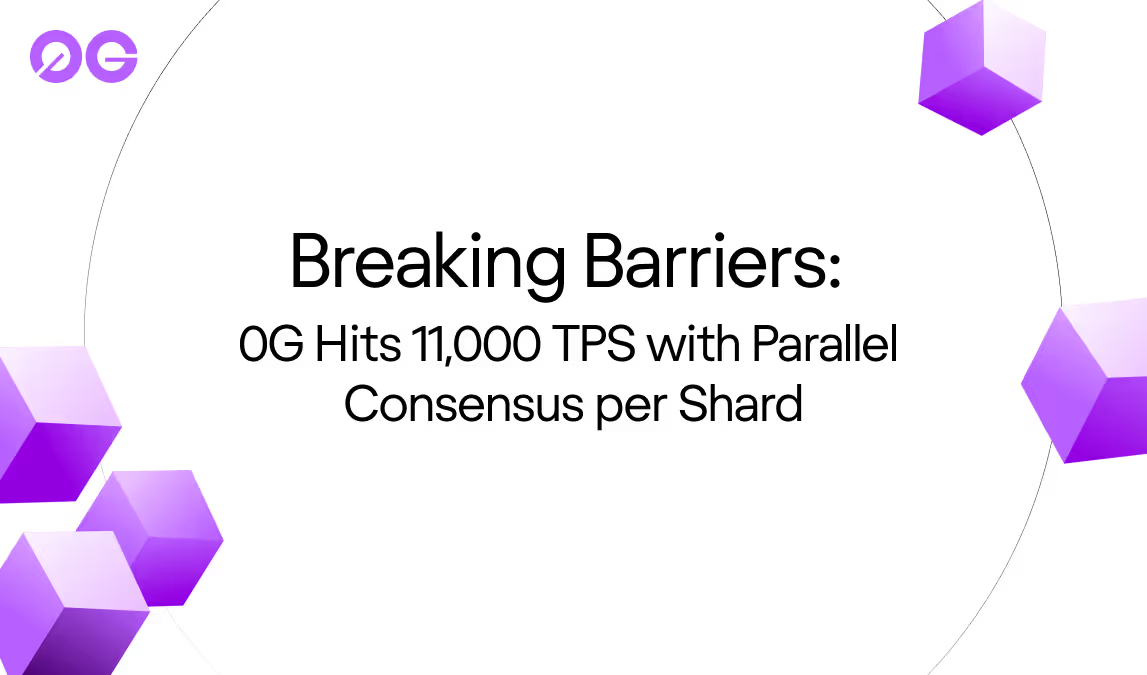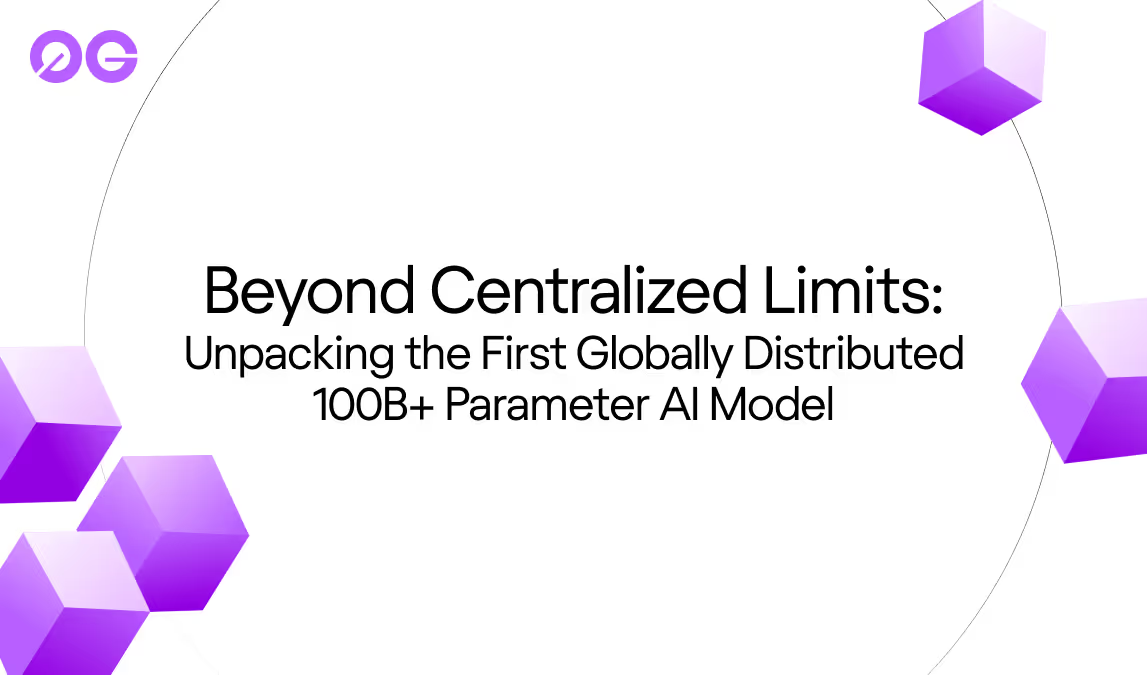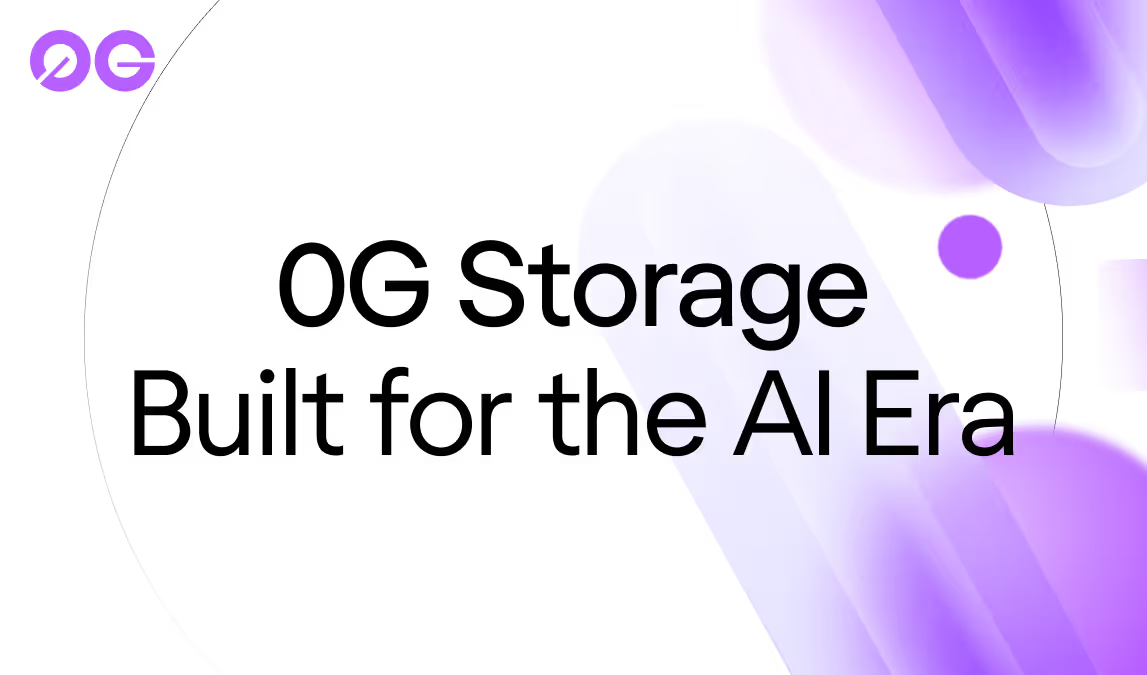

How Does 0G DA Compare to Celestia and EigenLayer?
In the highly competitive Data Availability (DA) space, projects like Celestia and EigenDA have established themselves as major players, backed by significant funding and advanced technical solutions. However, as the first Artificial Intelligence Layer (AIL), 0G outperforms traditional DA solutions across scalability, throughput, and latency, while also delivering far more.
By integrating compute and storage into the stack, 0G powers the first Decentralized AI Operating System (dAIOS), enabling real-time AI interactions, deep data storage, and high-performance computation on a decentralized network.
In this article, we will cover:
- Key Data Availability Solutions: An overview of Celestia and EigenDA, leaders in the DA space.
- 0G's DA Superiority: How 0G's DA layer outperforms Celestia and EigenDA in terms of throughput, latency, and scalability.
- 0G as a Decentralized AI Operating System (dAIOS): Beyond just DA, how 0G’s architecture supports decentralized AI workflows through integrated storage, computation, and data availability.
Overview of Competing DA Layers
While 0G offers far more than just data availability, it’s essential to evaluate how it stacks up against leading DA layers.
Celestia is a modular blockchain platform, known for its Data Availability Sampling (DAS), which allows light nodes to verify data without storing it all, enhancing scalability. Despite this, it faces limitations with throughput (10 Mbps) and block time (12 seconds), making it insufficient for high-performance needs. Its key features include:
Celestia is a modular blockchain platform designed for efficient data availability and consensus. It uses Tendermint for consensus (which assumes 2/3 of validators are honest) and offers fast finality with block times of ~12 seconds. Celestia's key innovation is Data Availability Sampling (DAS), which allows light nodes to verify that data is available by sampling small portions of the data, rather than storing everything. This is important for scalability, as it is relatively easy to become a light node, meaning that the amount of stored data can scale quite well.
To summarize:
- Data Availability Sampling (DAS): Enables scalability by allowing light nodes to verify small portions of data.
- 12-Second Block Time: Celestia uses Tendermint for consensus, achieving finality within ~12 seconds.
- Cosmos L1 Architecture: Built as a layer 1 on the Cosmos ecosystem, leveraging Tendermint's consensus mechanism.
EigenDA, on the other hand, is a data availability solution tied to Ethereum's EigenLayer. It uses restaking to incentivize Ethereum validators to also serve as DA validators, offering horizontal scalability through erasure coding. However, it focuses more on Ethereum L2 use cases and lacks flexibility for data-heavy applications like AI.
To summarize:
- Restaking for Validators: Validators on Ethereum can use their staked ETH as collateral to become EigenDA validators, providing DA services and earning additional yield.
- Tied to Ethereum via EigenLayer: EigenDA leverages Ethereum's security and restaking mechanism, relying on the Ethereum L1 for shared state and bridging DA attestations to L2s.
- Horizontal Scalability: EigenDA achieves horizontal scalability, meaning that adding more nodes directly increases system capacity, making it ideal for handling growing data demands.
EigenDA relies on a fixed-size quorum of 200 top validators selected based on their staked ETH. This means that only the top stakers participate in the data availability validation process.
0G’s Strength as a dAIOS
Even when evaluated purely as a DA layer, 0G outshines both Celestia and EigenDA. 0G's throughput is 50x higher, and its scalability extends far beyond both platforms, thanks to its random validator selection, which improves decentralization and security. However, 0G's true innovation lies in its ability to serve as a complete dAIOS, integrating computation, storage, and AI workflows on-chain. This unique combination positions 0G as the ultimate solution for data-heavy applications that Celestia and EigenDA cannot support effectively.
We covered our role as a dAIOS in-depth in this blog post.
However, on the DA side, key areas of differentiation include:
- Throughput: 0G’s throughput is so fast that we can support countless high-performance use cases even beyond AI, including high-frequency trading, on-chain gaming, and more.
- Latency: Celestia’s 12-second block times are too slow for high-performance applications like on-chain AI and trading, where 0G’s low latency makes it ideal.
- Decentralized Validator Selection: Unlike EigenDA’s deterministic node assignment, 0G’s random node selection enhances security and minimizes collusion risks.
- Independence from Ethereum: While EigenDA depends on Ethereum’s restaking mechanism, 0G offers complete modularity and avoids the complexity of Ethereum.
Conclusion
In conclusion, 0G is not just a DA layer, but the world’s first Decentralized AI Operating System (dAIOS), capable of managing real-time AI interactions, data storage, and computation on a modular, composable stack built for the next era of intelligent applications.
Despite its broader scope, 0G still surpasses leading DA solutions like Celestia and EigenDA in terms of scalability, performance, and flexibility, making it the clear choice for any high-performance decentralized application.
Want to join the on-chain AI revolution?
To start building with 0G, join our Discord or reach out here.






